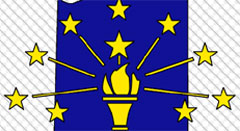Holiday Calendar for Mexico
What better way is there to celebrate both than to gather together for a healthy helping of music, dancing, food, and fireworks? The Mexican culture is very diverse and unique with plenty of celebrations and traditions.
 Help us
Help us National traditions, public holidays and notable observances for 2025-2026 year
December 2025
Wednesday 31 December -
Doce uvas (the Spanish New Year's tradition of eating twelve grape varieties, one for each of the twelve clock strokes by midnight, subsequently spread in such Spanish-speaking countries as Mexico, Bolivia, Venezuela, Ecuador, El Salvador, Peru, Colombia, Puerto Rico, Nicaragua, Costa Rica et al);
New Year’s Eve January 2026
February 2026
March 2026
April 2026
May 2026
June 2026
Sunday 21 June -
Father's Day (Ñelebrated on the third Sunday of June øò Argentina, Aruba, Canada, Costa Rica, France, Greece, Hong Kong, Hungary, India, Ireland, Kenya, Japan, Macao, Malaysia, Malta, Mexico, Netherlands, Pakistan, Peru, Puerto Rico, Singapore, Slovakia, South Africa, Sri Lanka, Trinidad and Tobago, Turkey, Venezuela, United Kingdom);
World Day against Amyotrophic Lateral Sclerosis;
Summer Solstice (International Day of the Celebration of the Solstice) July 2026
August 2026
Saturday 15 August -
Feast day of the Assumption of Mary (Christian feast day, one of the Catholic holy days of obligation a public holiday in Austria, Belgium, Benin, Bosnia, Burundi, Cameroon, Chile, Colombia, Croatia, Cyprus, France, Germany, Greece, Guatemala, Hungary, Italy, Ivory Coast, Lebanon, Liechtenstein, Lithuania, Luxembourg, Macedonia, Madagascar, Malta, Mauritius, Monaco, Paraguay, Poland, Portugal, Romania, Senegal, Seychelles, Slovenia, Spain, Switzerland, Togo, and Vanuatu)
September 2026
October 2026
November 2026
December 2026
About some mexican traditions
The nature of Mexico is fantastic. Mexico is home to jaguars, pumas, iguanas, manta rays, sea turtles, monkeys, parrots and many more animals.
Mexicans sure ain’t lazy, quite the contrary. They are working the longest average hours in the world (2,255 hours per year)! According to the Happy Planet Index, Mexicans are the second happiest population in the world, after Costa Ricans.
In Mexico, people often give each other nicknames, all of which match the playful and endearing nature of the culture.
Spanish is the most spoken language in Mexico, but Mexico has 68 official languages.
A popular Mexican tradition is the piñata. The piñata’s bright colors were designed as a symbol of temptation, with the stick representing the will to overcome sin. Today it is commonly used as a fun game at birthday parties. The blindfold symbolizes faith, while the candies and other goodies are added symbols of the riches of heaven tumbling down on the heads of those who defeated the evil.
The Mexican hat dance, or Jarabe Tapatio, is Mexico’s national dance.
A typical Mexican breakfast could include coffee and pan dulce (delicious sweet rolls). Snacks, or antojitos (“little whims”), are eaten at any time throughout the day. Tacos, tostadas, and quesadillas are some of the most common antojitos.
Caesar salad was invented in Mexico.
Guelaguetza, this is one of the most famous Mexican traditions in the world, was created a long time ago when little communities of Oaxaca needed to change products among them. Over the years this celebration evolved and turned into an exchange of culture with music, dance and, theatre that becomes the streets of Oaxaca into a cultural place where you can find a mix of Mexican traditions.
Chichen Itza - the pyramid was once part of the Mayan Empire is one of the seven wonders of the world.
The Chihuahua has become famous all over the world, but did you know that its origins is from Mexico? But the Xoloitzcuintli is the national dog.
Mexico is one of the largest silver producers. If you travel to Mexico it’s a good idea to buy some silver, not only because of the price but also since there are many beautiful silver-jewelry made here.
And the largest beer exporter. Corona is famous worldwide, but there are lots of other Mexican beer brands besides Corona.
















